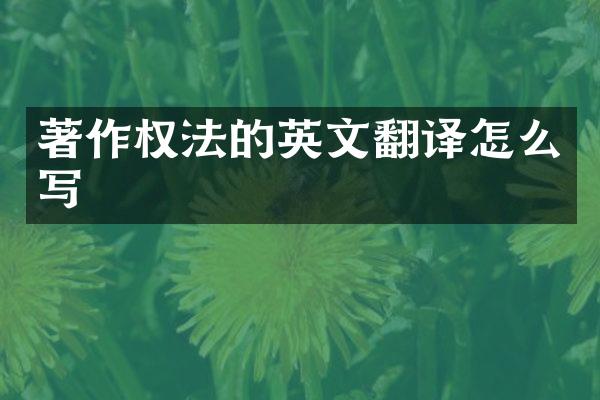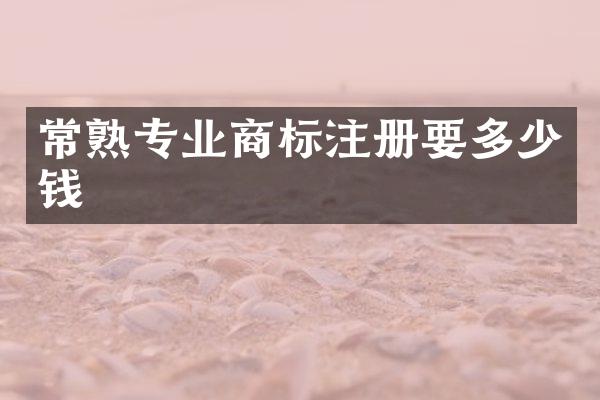著作权法的英文翻译通常称为"Copyright Law",其内容通常涉及保护创作者的作品免受未经授权的复制、分发和修改。以下是一个超过800字的著作权法的英文翻译示例:

---
Copyright Law
Copyright law refers to the legal framework established to protect the rights of creators over their original works of authorship. It encompasses a wide range of creative expressions, including literary, artistic, musical, and dramatic works, as well as software, architectural designs, and other intellectual creations. Copyright law grants creators exclusive rights to reproduce, distribute, perform, display, and adapt their works, while also imposing limitations and exceptions to balance the interests of creators and the public.
Purpose and Scope
The primary purpose of copyright law is to incentivize the creation and dissemination of culture and knowledge by granting creators the exclusive right to control the use of their works for a limited period of time. By providing creators with economic incentives and legal protections, copyright law encourages the production of new works and ensures that creators can benefit from their creations. At the same time, copyright law seeks to promote the public interest by facilitating access to and use of creative works for education, research, criticism, and other socially valuable purposes.
Subject Matter
Copyright law protects original works of authorship fixed in a tangible medium of expression. Eligible works include literary works such as novels, poems, and essays; musical works such as compositions and recordings; dramatic works such as plays and choreography; artistic works such as paintings, sculptures, and photographs; and audiovisual works such as films, videos, and multimedia presentations. Copyright protection also extends to derivative works based on pre-existing works, compilations of multiple works, and collective works created by collaborations of multiple authors.
Ownership and Rights
Copyright protection arises automatically upon the creation of an original work and is generally owned by the creator or creators of the work. Creators may transfer or license their copyright to others, such as publishers, distributors, or collective rights organizations, which then have the right to exploit the work in accordance with the terms of the transfer or license agreement. Copyright owners have exclusive rights to reproduce the work, prepare derivative works based on the work, distribute copies of the work to the public, perform the work publicly, and display the work publicly. These rights are subject to limitations and exceptions provided by law, including the doctrines of fair use and fair dealing, which permit certain unauthorized uses of copyrighted works for purposes such as criticism, commentary, news reporting, teaching, scholarship, and research.
Duration and Termination
Copyright protection typically lasts for a finite term, after which the work enters the public domain and may be freely used by anyone without permission from the copyright owner. The duration of copyright protection varies depending on factors such as the date of creation or publication of the work, the nationality or domicile of the creator, and the type of work involved. In some jurisdictions, copyright protection lasts for the life of the creator plus a certain number of years after the creator's death, while in others, it lasts for a fixed term of years from the date of creation or publication of the work. Copyright protection may also be terminated under certain circumstances, such as by expiration of the copyright term, abandonment of the work by the copyright owner, or failure to comply with formalities required by law.
Enforcement and Remedies
Copyright owners have the right to enforce their rights through civil litigation, administrative proceedings, or other legal means. Remedies for copyright infringement may include injunctive relief to stop unauthorized uses of the work, monetary damages to compensate the copyright owner for losses suffered as a result of the infringement, and in some cases, criminal penalties for willful or egregious violations of copyright law. In addition to pursuing legal remedies, copyright owners may also take non-legal measures to protect their rights, such as using technological protection measures to prevent unauthorized copying or distribution of their works.
International Treaties and Harmonization
Copyright law is subject to international treaties and agreements that seek to harmonize the legal framework for copyright protection across different countries and jurisdictions. Key international treaties in this area include the Berne Convention for the Protection of Literary and Artistic Works, the Agreement on Trade-Related Aspects of Intellectual Property Rights (TRIPS), and the WIPO Copyright Treaty. These treaties establish minimum standards of protection for copyrighted works and provide mechanisms for cross-border enforcement of copyright rights. By promoting international cooperation and mutual recognition of copyright protection, these treaties help to facilitate the global exchange of creative works and promote the development of a vibrant and diverse cultural environment.
Conclusion
Copyright law plays a crucial role in promoting creativity, innovation, and cultural exchange by providing creators with the incentives and protections they need to produce and disseminate their works. By balancing the rights of creators with the interests of the public, copyright law helps to ensure that creative works are both valued and accessible to society as a whole. As technology continues to evolve and the global marketplace for creative works becomes increasingly interconnected, the challenges and opportunities facing copyright law will continue to evolve as well. However, the fundamental principles underlying copyright law—namely, the promotion of creativity, the protection of rights, and the advancement of the public interest—are likely to remain constant in the years to come.
查看详情
查看详情

